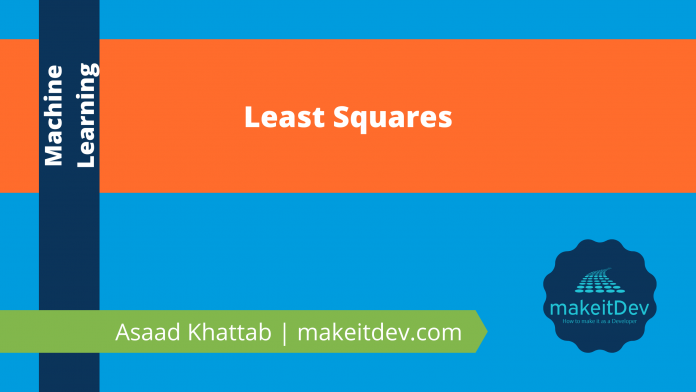46Day 52 of #66DaysofData (03/08/21):
I watched the Youtube Video, StatQuest: XGBoost Part 1 (of 4): Regression
45Day 51 of #66DaysofData (02/27/21):
I watched the Youtube Video, StatQuest: Support Vector Machines Part 3: The Radial (RBF) Kernel (Part 3 of 3)
44Day 50 of #66DaysofData (02/22/21):
I watched the Youtube Video, StatQuest: Support Vector Machines Part 2: The Polynomial Kernel (Part 2 of 3)
43Day 49 of #66DaysofData (02/20/21):
I watched the Youtube Video, StatQuest: Support Vector Machines Part 1 (of 3): Main Ideas!!!
42Day 48 of #66DaysofData (02/18/21):
I re-watched the Youtube Video, StatQuest: Gradient Boost Part 1 (of 4)
41Day 47 of #66DaysofData (02/17/21):
I watched the Youtube Video, StatQuest: Gradient Boost Part 2 (of 4): Regression Details
40Day 46 of #66DaysofData (02/16/21):
I watched the Youtube Video, StatQuest: Gradient Boost Part 1 (of 4): Regression Main Ideas
39Day 45 of #66DaysofData (02/15/21):
I watched the Youtube Video, StatQuest: Adaboost
38Day 44 of #66DaysofData (02/14/21):
I watched the Youtube Video, StatQuest: Stochastic Gradient Descent
37Day of #66DaysofData (02/13/21):
36Day 43 of #66DaysofData (02/12/21):
I watched the Youtube Video, StatQuest: Gradient Descent, Step-by-Step
35Day 42 of #66DaysofData (02/11/21):
I watched the Youtube Video, StatQuest: The chain rule
34Day 41 of #66DaysofData (02/10/21):
I watched the Youtube Video, StatQuest: Random Forests Part 2: Missing data and clustering.
33Day 40 of #66DaysofData (02/09/21):
I watched the Youtube Video, StatQuest: Random Forests Part 1 – Building, Using and Evaluating
32Day 39 of #66DaysofData (02/08/21):
I watched the Youtube Video, StatQuest: How to Prune Regression Trees.
31Day 38 of #66DaysofData (02/07/21):
I watched the Youtube Video, StatQuest: Regression Trees.
30Day 37 of #66DaysofData (02/06/21):
I watched the Youtube Video, StatQuest: Decision Trees – part 2.
29Day 36 of #66DaysofData (02/05/21):
I watched the Youtube Video, StatQuest: Decision Trees.
28Day 35 of #66DaysofData (02/04/21):
I watched the Youtube Video, StatQuest: Gaussian Naive Bayes
27Day 34 of #66DaysofData (02/03/21):
I watched the Youtube Video, StatQuest: Naive bayes
26Day 33 of #66DaysofData (02/02/21):
I watched the Youtube Video, StatQuest: K-nearest neighbors
25Day 32 of #66DaysofData (02/01/21):
I watched the Youtube Video, StatQuest: K-means clustering
24Day 31 of #66DaysofData (01/31/21):
I watched the Youtube Video, StatQuest: Hierarchical Clustering
23Day 30 of #66DaysofData (01/30/21):
I watched the Youtube Video, StatQuest: t-SNE, Clearly Explained
22Day 29 of #66DaysofData (01/29/21):
I watched the Youtube Video, StatQuest:MDS and PCoA
21Day 28 of #66DaysofData (01/28/21):
I watched the Youtube Video, StatQuest: Linear Discriminant Analysis (LDA) clearly explained.
20Day 27 of #66DaysofData (01/27/21):
I watched the Youtube Video, StatQuest: PCA in Python
19Day 26 of #66DaysofData (01/26/21):
I watched the Youtube Video, StatQuest: PCA Practical Tips
18Day 25 of #66DaysofData (01/25/21):
I watched the Youtube Video, StatQuest: PCA main ideas in only 5 minutes!!!
17Day 24 of #66DaysofData (01/24/21):
I watched the Youtube Video, StatQuest: Principal Component Analysis (PCA), Step-by-Step
16Day 23 of #66DaysofData (01/23/21):
I watched the Youtube Video, StatQuest: Regularization Part 3: Elastic Net Regression
15Day 22 of #66DaysofData (01/22/21):
I watched the Youtube Video, StatQuest: Ridge vs Lasso Regression, Visualized!!!
14Day 21 of #66DaysofData (01/21/21):
I watched the Youtube Video, StatQuest: Regularization Part 2: Lasso (L1) Regression
13Day 20 of #66DaysofData (01/20/21):
I watched the Youtube Video, StatQuest: Regularization Part 1: Ridge (L2) Regression
12Day 19 of #66DaysofData (01/19/21):
I watched the Youtube Video, StatQuest: Deviance Residuals
11Day 18 of #66DaysofData (01/18/21):
I watched the Youtube Video, StatQuest: Saturated Models and Deviance
10Day 17 of #66DaysofData (01/17/21):
I watched the Youtube Video, StatQuest: Logistic Regression Details Pt 3: R-squared and p-value
9Day 16 of #66DaysofData (01/16/21):
I watched the Youtube Video, StatQuest: Logistic Regression Details Pt 2: Maximum Likelihood
8Day 15 of #66DaysofData (01/15/21):
I watched the Youtube Video, StatQuest: Logistic Regression Details Pt1: Coefficients
7Day 14 of #66DaysofData (01/14/21):
I watched the Youtube Video, StatQuest: Logistic Regression
6Day 13 of #66DaysofData (01/13/21):
I watched the Youtube Video, StatQuest: Odds Ratios and Log(Odds Ratios), Clearly Explained!!!
5For Day 12 of #66DaysofData (01/12/21):
I watched the Youtube Video, StatQuest: Odds and Log(Odds).
4Day 4 of #66DaysofData:
I watched the Youtube Video, StatQuest: Machine Learning Fundamentals: Sensitivity and Specificity
3Day 3 of #66DaysofData:
I watched the Youtube Video, StatQuest: Machine Learning Fundamentals: The Confusion Matrix
2Day 2 of #66DaysofData:
I watched the Youtube Video, StatQuest: Machine Learning Fundamentals: Cross Validation
1For Day 1 of #66DaysofData:
I watched the Youtube Video, StatQuest: A Gentle Introduction to Machine Learning


















